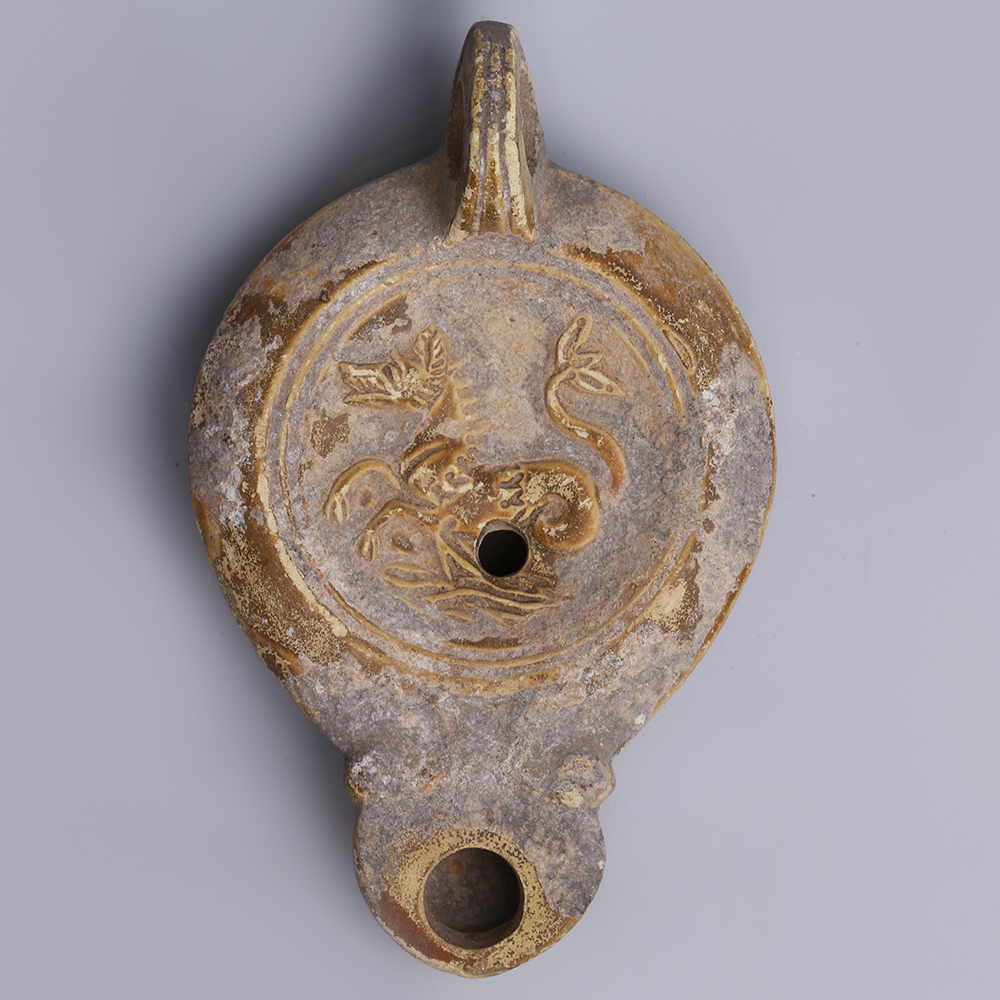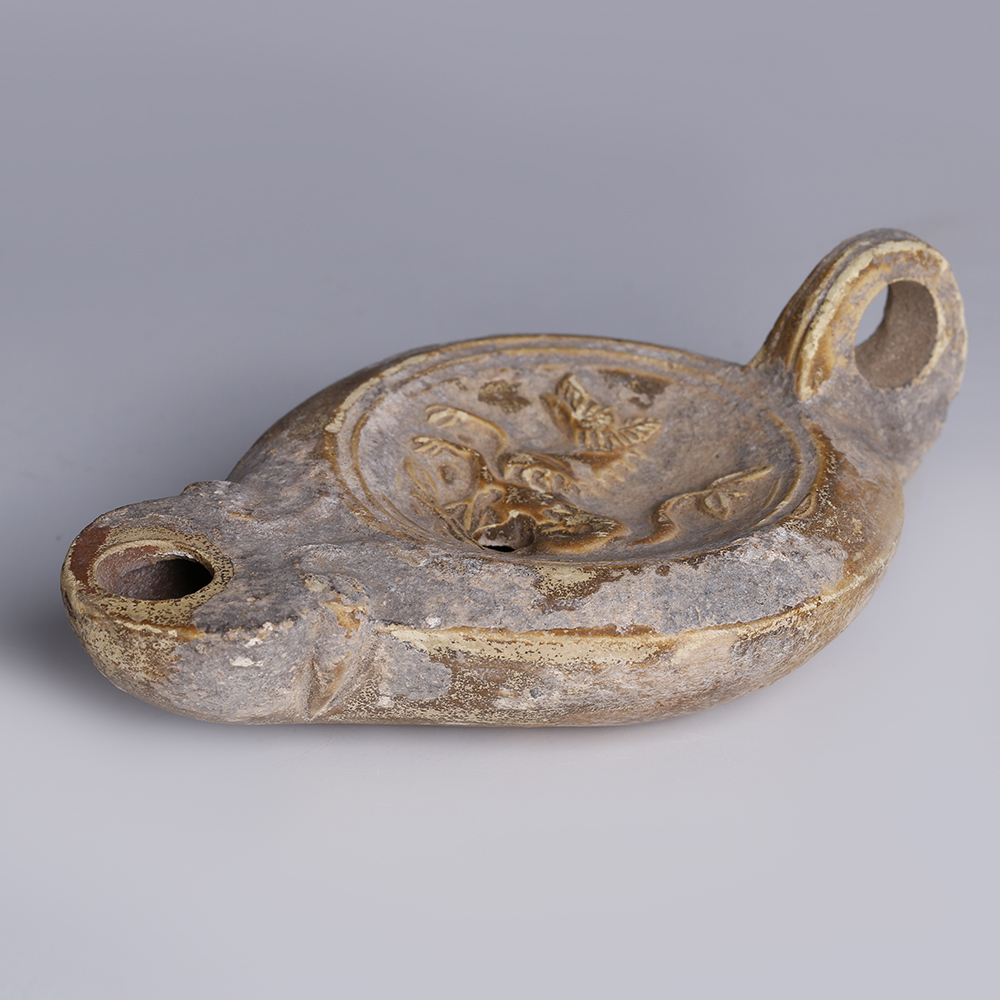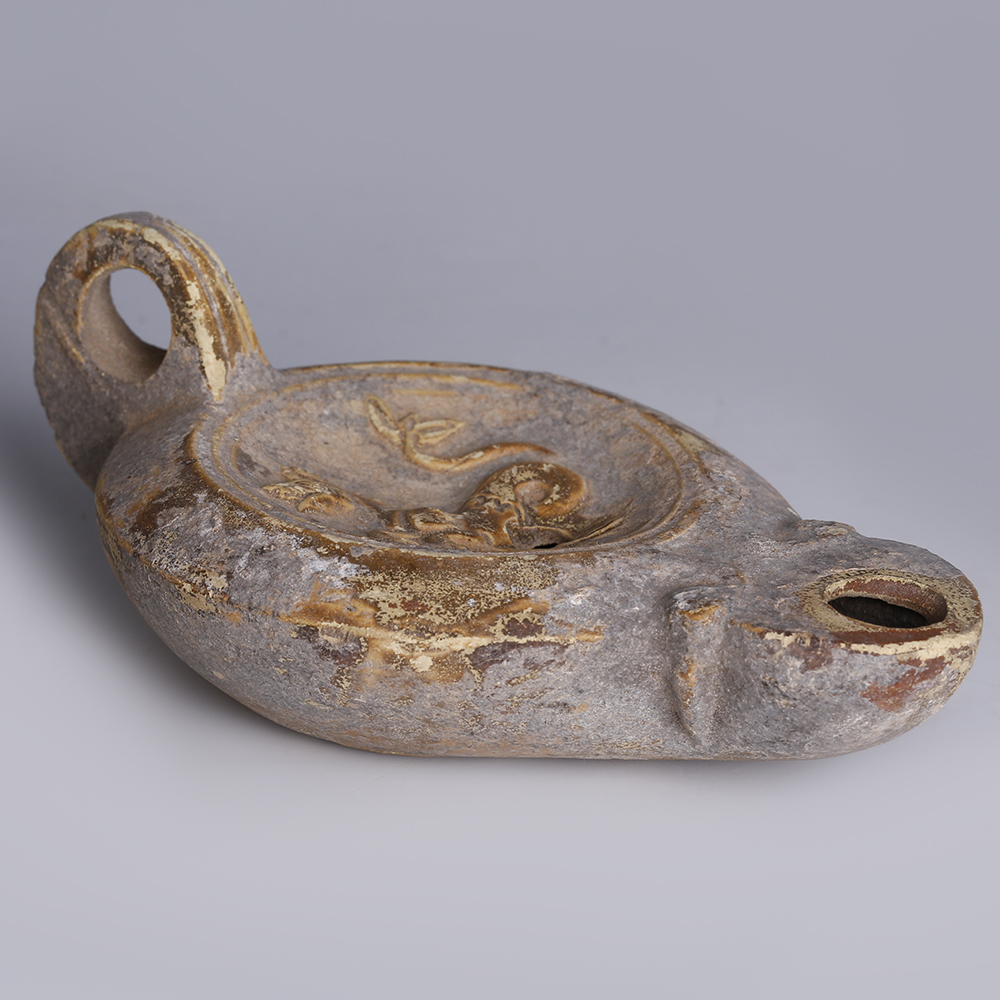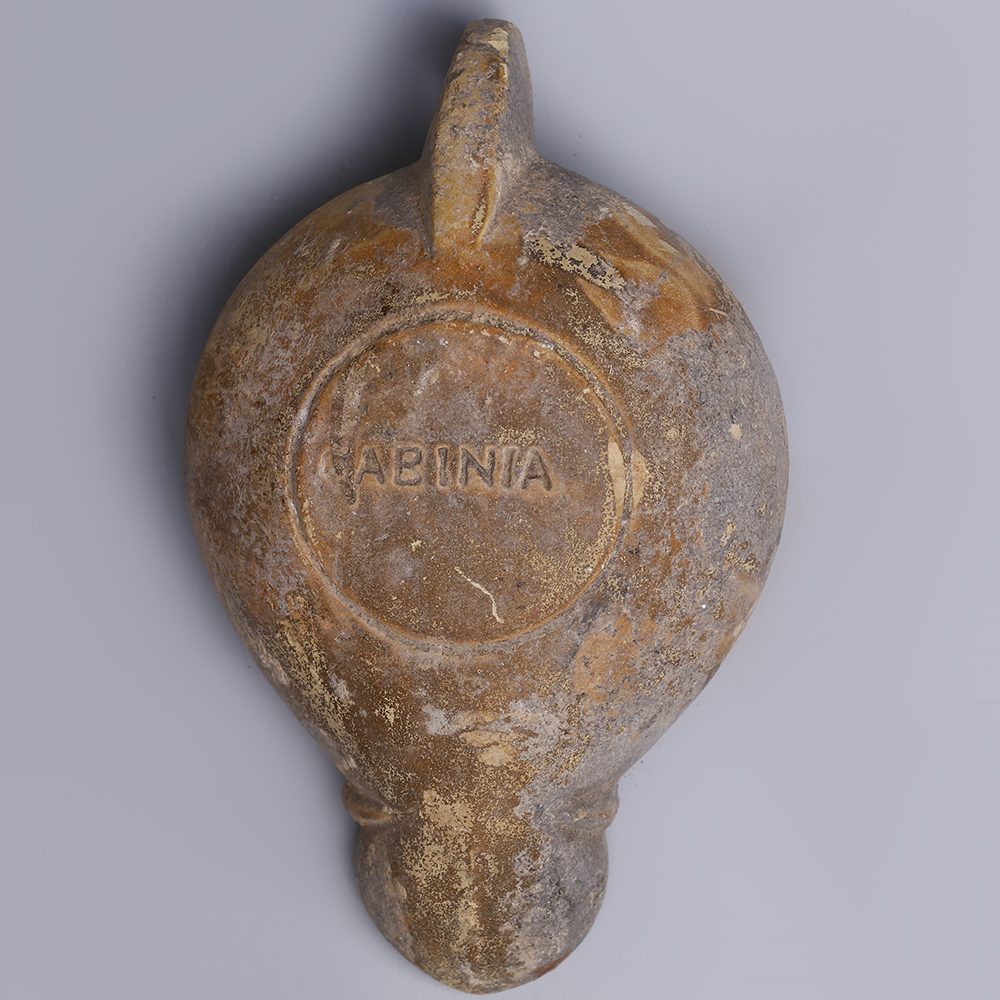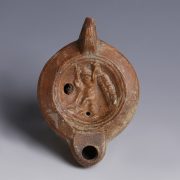In Antiquity, a lamp was originally called a lychnus, from the Greek λυχνος, with the oldest Roman lamps dating back to the third century BC. During the Roman Empire, it became commonplace to use lamps in funeral ceremonies and for public purposes. Over time, the manufacture of lamps increased, and so did the variation in decoration, which depended mainly on the shape and size of the lamp. Common decorative themes depicted on the discus were entertainment scenes, such as gladiators in combat, popular myths, and domestic animals. The scene depicted on this lamp might be interpreted as a scene driven from the myth of Perseus and Andromeda. The myth of Perseus and Andromeda started when Andromeda’s mother, the queen of Aethiopia Cassiopeia, claimed that her and her daughter were prettier than the Nereids, deities of the Ocean. This claim offended the sea-god Poseidon who decided to send a monster, Cetus, to ravage the coasts of Aethiopia. The only way to stop him and save the population was to sacrifice Andromeda to the monster. The hero Perseus, on his way back from the killing of Medusa, finds the princess chained to a rock by the sea, ready to die. But he kills Cetus and frees Andromeda, who later becomes his wife.
Ancient Roman Oil Lamp with a Sea Monster
$565.44
An original Ancient Roman oil lamp moulded in light coloured terracotta and featuring a short round nozzle decorated with volutes, a single pierced, applied handle and one filling hole to the discus. The rim is flattened and includes concentric circles, framing the moulded depiction of a sea monster on the discus. The monster is portrayed as hybrid creature between a hound and a dolphin with a fan-like tail. It is represented above sea waves and can be identified as the mythological Cetus, a creature slayed by the Greek hero Perseus. The lamp can be classified as Loeschcke V; Bailey C group IV and has been marked by the maker to the underside with incised letters, reading C ABI NIA (Gabinia).
Provenance: Private Israel collection, SM. Israeli export license for the collection.
Condition: Very fine. Signs of ageing and earthly encrustations on the surface. Restored.
SOLD
| Weight | 78.3 g |
|---|---|
| Dimensions | L 12.5 x W 7.6 x H 4.5 cm |
| Culture | |
| Pottery and Porcelain | |
| Region |
